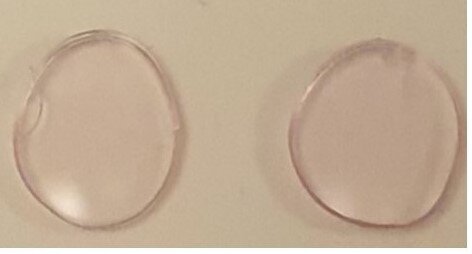Researchers from Khalifa University and Imperial College have developed contact lenses which can safely help people with colour blindness to see colours.
We can use tinted glasses, but they cannot help correct blurry vision. Dyed contact lenses currently in development for the condition are potentially harmful and unstable.
The team reports in ACS Nano that they infused contact lenses with gold nanoparticles to create a safer way to see colours.
The Problem
Having colour blindness causes issues for daily activities and there are also major issues. This genetic disorder causes people to have trouble discriminating between red and green shades, and red-tinted glasses can make those colours more prominent and easier to see. But these lenses are bulky, and we cannot make the lens material to fix vision problems.
Therefore, the team focused on developing specially tinted contact lenses. Although the prototype hot-pink dyed lenses improved red-green colour perception in clinical trials, they leached dye, which led to concerns about their safety
Thus they looked up to gold nanoparticles. Gold nanocomposites are non-toxic and have been used for centuries to produce “cranberry glass” because of the way they scatter light.
So, Ahmed Salih, Haider Butt and colleagues wanted to see whether incorporating gold nanoparticles into contact lens material instead of dye could improve red-green contrast safely and effectively.
The team evenly mixed gold nanoparticles into a hydrogel polymer which forms rose-tinted gels that filtered light within 520-580 nm, the wavelengths where red and green overlap.
The most effective lenses were those which were 40nm-wide gold nanoparticles. These were the best, as they did not clump or filter more colour than required.
They also had water-retention properties and were not toxic to cells growing in Petri dishes in the lab. After comparing the new material to two commercially available pairs of tinted glasses, and their previously developed hot-pink dyed contact lens, the team found that gold nanocomposite lenses were more selective in wavelengths they blocked than the glasses.
The team added that the new lenses also matched the needed wavelength range of dyed contact lenses. They are now on their mission to conduct clinical trials with human patients to assess the comfort level.
Journal Reference:
Ahmed E. Salih et al. Gold Nanocomposite Contact Lenses for Color Blindness Management, ACS Nano (2021). DOI: 10.1021/acsnano.0c09657

